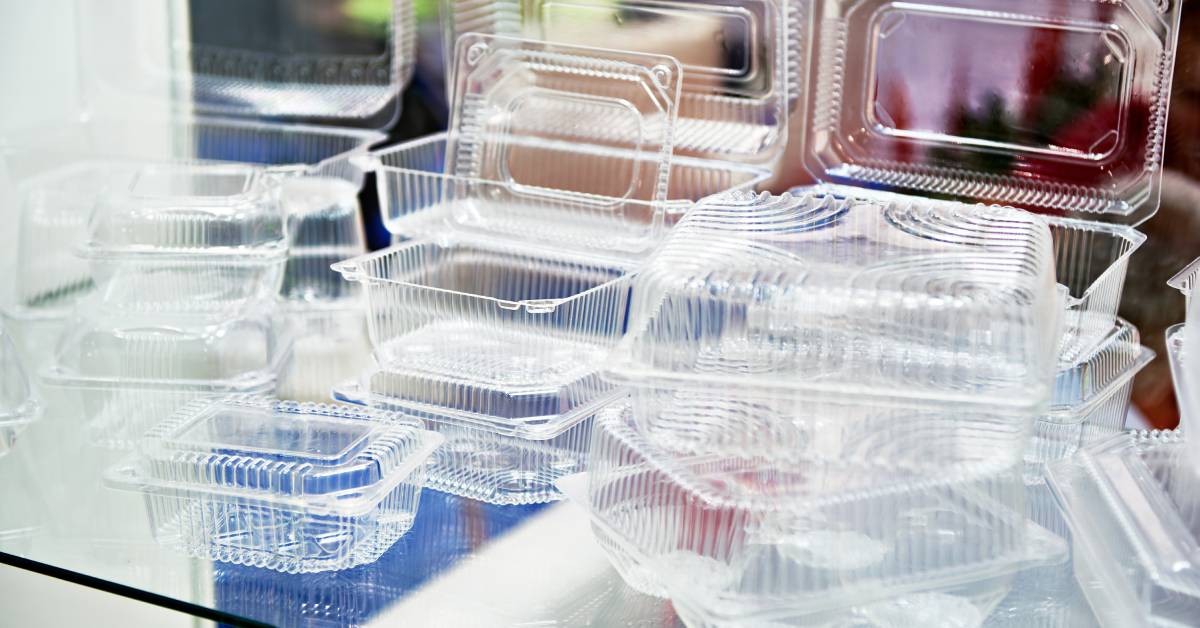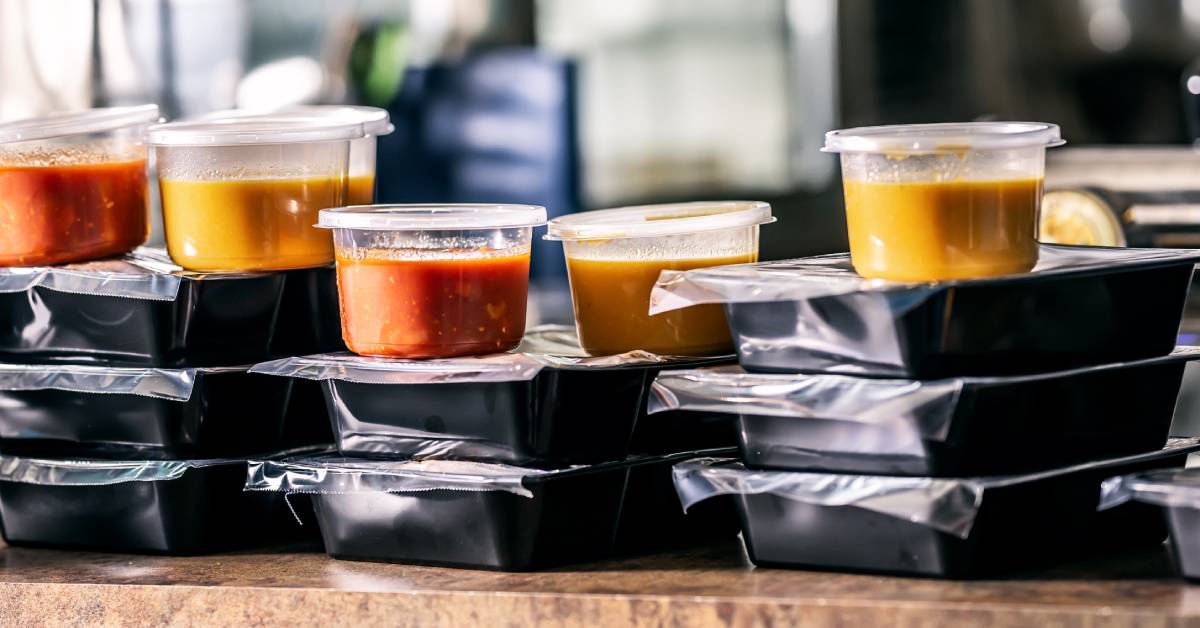How To Properly Store and Handle Disposable Food Containers
Properly handling and presenting disposable food containers is essential for maintaining the quality and freshness of your meals. From selecting the right type of container to ensuring that food is sealed securely, every step matters in delivering a superior dining experience. Read on to learn how to properly store and handle disposable food containers.
Choosing the Right Type of Disposable Container
When selecting disposable food containers, the material is key to presentation and functionality. For instance, plastic containers are great for holding liquids, while paper containers work best for dry foods. The type of food you serve will determine which material is ideal. Not only should your choice keep the food fresh, but it should also be visually appealing to customers. Consider factors like heat retention, food separation, and ease of transportation when choosing the perfect container for your business.
Importance of Proper Sealing for Freshness

To ensure that your food stays fresh, properly sealing your disposable containers is a must. Tight seals prevent leakage and keep food from being exposed to air, which can dry it out or cause it to spoil. For businesses serving soups or liquids, a well-sealed container is critical to avoid accidents. Make sure your staff understands the importance of checking seals before handing off food to customers, as this directly impacts the dining experience.
Labeling for Clarity and Convenience
A clear, concise label is essential when handling takeout orders. It helps customers identify their meals quickly and ensures that they receive the correct order. Labeling should include the name of the dish, ingredients, or any allergen information. For large orders, organizing labels by item type can make distribution easier. Accurate labeling not only enhances customer satisfaction but also reflects your professionalism.
Stacking Containers for Efficiency
How you stack disposable food containers is an often-overlooked detail that can make a significant difference. Stacking containers improperly can lead to spillage or damage. Use containers with flat, sturdy tops to stack efficiently without risking collapse. Additionally, when handling larger orders, stagger the containers to distribute the weight evenly, ensuring that no container is crushed under the weight of another.
Maintaining Food Temperature During Delivery
Temperature control is critical in ensuring customer satisfaction, particularly for hot and cold dishes. Invest in insulated delivery bags or boxes to maintain proper temperatures during transit. Keep cold dishes in separate compartments from hot foods to avoid spoilage or loss of texture. By maintaining the correct temperature, you’ll deliver meals that are fresh and appetizing, just as if they had been served in-house.
Presenting the Food With Care
Although the food is in a disposable container, presentation still matters. Arrange the food in a neat and appealing way, making sure that sauces and sides don’t mix unintentionally. Consider clear containers that allow customers to see the food, which adds an extra level of appeal. Small touches, such as placing sauces in separate containers, show attention to detail and enhance the dining experience.
Using Environmentally Friendly Materials
Many customers appreciate businesses that make eco-friendly choices. Using biodegradable or compostable disposable containers shows that your restaurant is mindful of its environmental impact. Not only does this resonate with eco-conscious customers, but it also positions your brand as a responsible and forward-thinking business. There are a variety of eco-friendly materials available, from compostable paper to plant-based plastics.
Training Staff on Proper Handling
Your staff plays a crucial role in how disposable containers are handled and presented to customers. Proper training ensures that they know how to seal, label, and arrange containers to prevent spills or damage. Train your team to handle containers gently, particularly when preparing large takeout orders. Encourage them to communicate with customers about any special handling instructions for delicate or complex dishes.
Adopting Consistent Portion Control
Maintaining consistency in portion sizes is key to keeping customers satisfied. Using the right size of container is important for portion control, as it helps prevent over- or under-serving. When portion sizes are consistent, customers know what to expect, which can build trust and loyalty. Also, properly portioned food fits well in containers, preventing unnecessary movement that can cause spillage.
Communicating With Customers About Disposal
Providing clear instructions on how to dispose of or recycle the containers can be a thoughtful touch. Some customers may not know that the container you provide is compostable or recyclable. Including a note with disposal instructions or printing it directly on the container itself is a simple way to encourage responsible waste management. This also aligns with sustainability efforts and promotes eco-conscious practices.
Ensuring Hygiene and Safety Standards
Maintaining hygiene is crucial when handling disposable food containers. From the kitchen to the customer, everyone involved must prioritize cleanliness. Containers should be stored in a clean, dry place and handled with gloves when necessary to avoid contamination. Additionally, training staff to sanitize their hands and workstations can help prevent the spread of germs and ensure the safety of the food you serve.
Customizing Your Containers for Branding
Disposable food containers are an excellent branding opportunity. Customizing them with your restaurant's logo or tagline adds a professional touch and keeps your brand top of mind for customers. Whether it’s a stylish design or a catchy slogan, customized containers show that your business pays attention to the little details. This can lead to repeat business and customer loyalty as your brand becomes more recognizable.
Choosing the Right Container for Delivery vs. Takeout

It’s essential to differentiate between containers designed for delivery and those for takeout. Delivery containers need to be sturdier to withstand longer transit times, while takeout containers focus more on convenience. Make sure you use the right container for each situation to ensure food arrives in the best condition. Additionally, choosing containers that align with your delivery service’s capabilities can prevent issues during transport.
Understanding Regulatory Requirements
Some regions have specific regulations on the materials used in food containers. Ensure that the containers you use comply with local health and safety standards. Certain materials, such as Styrofoam, may be restricted or banned in specific areas due to environmental concerns. Stay informed about these regulations to avoid any potential fines and to continue offering safe, compliant food packaging solutions.
Sourcing Wholesale Containers for Cost Efficiency
Purchasing disposable containers in bulk can save your business money while ensuring a consistent supply. To-go containers wholesale are widely available and can be sourced in environmentally friendly options as well. Working with a reliable supplier guarantees that you always have the right containers on hand for peak times or special events. Having a reliable inventory also means your business can handle unexpected large orders without scrambling for last-minute solutions.
Now that you know how to properly store and handle disposable food containers, you can ensure the best experience for your customers, from presentation to delivery. Whether you’re sourcing wholesale to-go containers or focusing on branding, thoughtful handling can enhance both your food’s appeal and your customers’ satisfaction.
Recent Posts
-
Why Portion Cups Are Essential for Condiments
Condiment service can make or break the dining experience at your restaurant or catering event. Why …Dec 18th 2025 -
Pros and Cons of Cardboard Catering Boxes
Selecting the right packaging is a fundamental decision for any catering business. The containers yo …Dec 11th 2025 -
How To Choose the Best Aluminum Foil Containers for Food
Selecting the right containers for your restaurant or catering business affects everything from food …Dec 10th 2025




